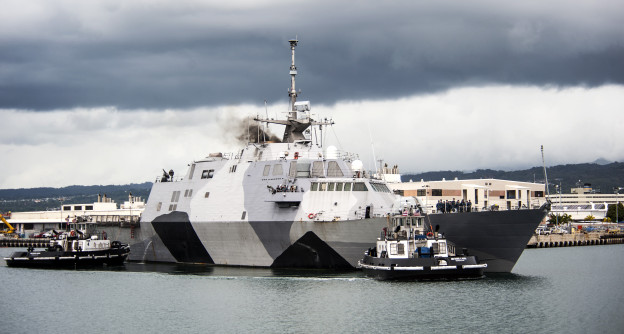
Congress is asking for additional oversight of the Littoral Combat Ship program as part of the Fiscal Year 2014 defense authorization bill, ahead of a planned Fiscal Year 2015 block buy for 20 more of the ships.
The authorization bill — passed by the House Thursday — will require the U.S. Navy, the Pentagon and the Government Accountability Office (GAO) to submit a series of reports on the status of the two different ship hulls and the progress of the mission packages to Congress before legislators will allow the service to start of the next block buy.
However, the increased oversight themselves will not likely delay Navy plans to set up a second block buy for the seaframes, several sources told USNI News.
The Navy was not resistant to the new series of reports, congressional sources told USNI News.
The reports will ask the Navy to compare the LCS new mission modules (Anti Surface Warfare, Anti Submarine Warfare and Mine Counter Measures) to existing capabilities in the U.S. Navy, outline a master plan for operating the ships and several other detailed looks
The first report — due 60 days after its signed by the president — will be outline “a current concept of operations and expected survivability attributes of each of the Littoral Combat Ship (LCS) seaframes from the office Chief of Naval Operations in coordination with the Director of Operational Test and Evaluation (DOT&E).”
DOT&E has been one of the LCS most strident institutional critics.
In several annual reports the office has questioned the survivability of both the Lockheed Martin Freedom-class (LCS-1) and Austal USA’s Independence-class (LCS-2) hulls saying several times the ship would not be survivable in a combat situation — a position the Navy has repeatedly argued against.
Several congressman — Sen. John McCain (R-Ariz.) being among the most vocal — have called for the program to be curtailed.
Last week’s defense authorization deal does not answer lingering questions on the number of LCS the Navy wants to buy as part of the next block buy. September reports said the Office of the Secretary of Defense was pushing a plan for the Navy to cap LCS at 24 hulls in its worst case scenario budget plan for 2015.
The so-called alternate program objective memoranda (ALT POM) would cap the program at 24 hulls, defense sources told USNI News at the time.
The Senate is poised to vote on the NDAA and a larger budget deal that would curb some of the defense sequestration cuts that were part of the 2011 Budget Control Act (BCA) by the end of the week.





